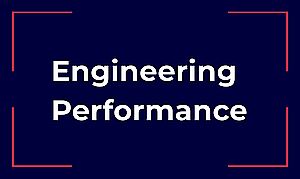Borehole tomography / Seismic tomography: precise underground exploration with DMT
For safe and stable construction: Our services in the field of seismic tomography and especially borehole tomography deliver reliable information about your foundation soil. Our specialists carry out the measurements, create a tomography model of the subsoil and identify the homogeneous and possible inhomogeneous areas in the substrate. These results are prepared in such a way that they can easily be integrated into the geotechnical report.
Seismic tomography for all applications: Between boreholes, from the surface and in combination with borehole scans
Our specialists use seismic borehole tomography to explore underground geological structures and identify features of the subsoil, such as layer boundaries, cavities, weak zones, karst caves, loose zones and strongly disturbed earth. In foundation engineering and tunnel construction projects, as well as for the engineering of bridges and other large structures, our tomographies will help you get your construction project off to a safe start by minimizing risks and unnecessary costs.
Seismic tomography is used for a detailed geophysical investigation. Unlike point by point drilling, it provides continuous information about the subsoil - crucial for planning in foundation engineering and tunnel construction. Our geophysicists and engineers also use seismic tomography to determine the mechanical properties of rock, using equipment for a wide variety of tomographic applications and geophysical borehole measurements. For example, shear waves and compression waves can be used and combined with borehole scans. Seismic borehole measurements can also be combined with surface and underground wave sources to optimize coverage.
Using non-destructive methods, the data is recorded along a minimum of two holes with the positions of the seismic source and the transducers in the boreholes gradually changing. As a result, the subsurface is often radiated multiple times and the paths of the seismic rays overlap. The denser and more uniform the radiation coverage of the area being explored, the better the resolution of the resulting tomographic image.
For each beam a propagation time is measured, from the multitude of which the spatial distribution of the seismic velocities can be calculated.
High-resolution 2D and 3D images for a continuous underground model
Seismic tomography is suitable for the following applications:
- Investigation of structures such as faults, loosening, karstification but also of built-up areas and engineering structures
- Detection of cavities
- Exploration of sinkholes
- For the control of cement injection grouting
The tomography results in high-resolution 2D and 3D images of P and S waves, which provide a continuous model of the substrate between the holes. To integrate the geotechnical soil properties, it is calibrated using drilling data, soil samples and borehole measurements.
Supplementary services in the field of seismics and borehole measurements
In addition to seismic tomography and borehole tomography, in solid rock we recommend using a combination of optical and acoustic borehole measurements. Such measurements can aid and improve the interpretation of the tomography measurements.
Combining these methods with a further borehole measurement for density determination can also be beneficial. Together with the wave velocities from tomography, this measurement enables the determination of elastic parameters, which are required for the planning of ground improvement measures and for the dimensioning of underground structures, such as diaphragm walls and foundations.
Do you have further questions about our seismic services? Or are you interested in a seismic tomography or borehole tomography survey?


